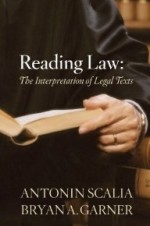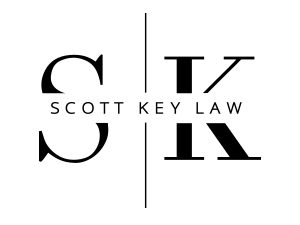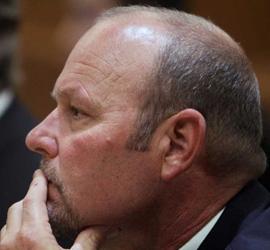To catch you up to speed, I recently blogged about GPDSC’s recent argument to the Supreme Court of Georgia that public defenders should have the right to represent clients in the same circuit public defender’s office even when there is a conflict in the representation. Mr. Samuel Merritt, a Circuit Public Defender disagreed. I posted his comment, quite a lengthy one, as a blog post yesterday. I commend both to your reading. I also am going to offer some observations below about Mr. Merritt’s argument.
The Ad Hominem Arguments
Mr. Merritt does a couple of rhetorical things in the post. They’re both worth examining as examples of a classic ad hominem attack. An ad hominem argument is an attempt to refute the truth of a claim by pointing out something negative about the person supporting it. Mr. Merritt shrouds the opening and closing of this argument with this rhetorical device. Note that paragraph one is an attack on me as either uninformed or misinformed. Of course, Mr. Merritt doesn’t know me at all and can’t possibly know how informed I am. He doesn’t know, for instance, that I am the chair of the amicus committee for the Georgia Association of Criminal Defense Lawyers and that our committee, in conjunction with our organization’s indigent defense committee chair provided amicus support for a similar proposed rule regarding conflicts in public defender’s offices. He wouldn’t know that I have read the briefs, watched the oral argument in its entirety and have been in conversation with our indigent defense chair, himself a man who represents indigent defendants, about this rule. But his post is not about me, it’s about the fact that he disagrees with me.
And Mr. Merritt’s argument also closes with an ad hominem attack, this one a bit more powerful for its subtlety. I’ll quote it verbatim to demonstrate its worthiness to be included in a philosophy 101 textbook as an example of the ad hominem fallacy: “But I do take issue when someone from outside the public defender world undertakes to criticize one of my colleagues …” This passage is from Mr. Merritt’s last sentence. We have two choices in how to interpret this passage. One, is that it’s merely a rhetorical device. Better to attack me as the person making the argument than to attack the argument itself (it’s the kind of thing, by the way, that prosecutors often do in closing argument.). At least, I hope that it’s merely a rhetorical device. The less charitable view of the argument is that it expresses an honest belief that nobody had better dare criticize GPDSC or its actions unless they are a person within that system. I am hesitant to indulge the latter too terribly much because of how offensive it potentially is. GPDSC, as Mr. Merritt points out, is a government agency. And it is troubling to think that there is any government official or agency that is beyond criticism from an ordinary citizen unless the citizen part of that “world.”
Think, for a moment, how the argument sounds if directed to criticism of another government agency. Don’t like the governor? Tough. You don’t work in his office. Don’t like what the legislature is doing? Unless you are a legislator yourself, I take issue with your right to even say things about the legislature. So, you’ll see, I hope that the closing comment was merely a rhetorical thing. If it expresses an honest heartfelt belief about my right to even criticize, then it is a perfect example of the iron law of bureaucracy I spoke about in my previous post. The First Amendment, of course, exists precisely so that ordinary people outside the “world” of government can criticize it. And Mr. Merritt’s colleague appeared at the Supreme Court as a government agent, in a public courtroom, where he articulated an official agency position. When he did that, I understand (not merely an understanding I developed in law school but an understanding that dates back to a high school civics class I took in the 9th grade) that citizens can criticize. If I’m wrong about that, either government has changed or I’m just fundamentally mistaken. Or maybe I’ve been teleported to Iran and was unaware until recently.
Another observation before I move on. I’m not sure what the membership requirements are to enter the “public defender world.” Apparently, the fact that I carry an indigent appellate caseload (albeit from a county that opted out of GPDSC and therefore funds experts and actually pays the lawyers without cutting their bill) and have for the past ten years, does not make me eligible for citizenship in the “public defender world.” And perhaps Mr. Merritt didn’t know these things about me before he penned his comment in which he criticizes me for being uninformed. And if you, as the reader, are a citizen of the State of Georgia, you are bona fide to criticize Mr. Merritt’s colleague, too. Why? Because he is part of a government agency that took a public position on that agency’s behalf in a public courtroom. Were the Justices who questioned Mr. Merritt’s colleague at the oral argument out of line, too? They, too, are not part of Mr. Merritt’s “public defender world.”
The Attorney General’s Role
Mr. Merritt calls the fact that the Circuit Public Defender and the Attorney General appeared as co-counsel at the argument a fairly normal thing – “[h]ardly a surprise, a secret, or a sign of skulduggery.” He is right about the fact that the Attorney General represents executive agencies. And, yes, GPDSC, is an executive agency. It was not always so, of course. At its creation, GPDSC was in the judicial branch of government. In 2008, Gov. Perdue and the Georgia General Assembly moved GPDSC into the executive branch, the same branch of government as the attorney general, the prosecutor who seeks to put defendants in jail, and the police officer who arrested the defendant. That move, itself, was criticized as creating an inherent conflict. A surprise? Hardly. A secret? Not at all. In fact, the public defender and the Assistant Attorney General shared the same table as co-counsel in a very deliberate and public way (which was part of the point of my original post). Sculduggery? At a systemic level, I’m not so sure.
The attorney general’s office represents the State at the appellate level in murder cases, in cases where the constitutionality of a criminal statute is at question, and on certain occasions to prosecute indigent defendants in trial courts. So, yes, it is interesting to note that the attorney general is also GPDSC’s lawyer. My original post was about one type of conflict. But I welcome the opportunity to speak of another.
Financial Incentive
I want to spend a little time with this argument: “a public defender’s office is NOT the same as a private law firm because public defenders do not have a financial interest in the outcome of their case …” (author’s all caps). As a lawyer in private practice, I actually don’t have a financial interest in a case’s outcome. If I took a criminal case on a contingency arrangement (“you don’t pay unless I get you acquitted or your conviction reversed on appeal”), I’d likely go out of business before the folks in Atlanta could disbar me. My clients pay me to represent them, but my fee arrangement is not results-based. I’d commend my fellow member of the bar to Rule 1.5 (d)(2) of the Georgia Rules of Professional Conduct.
The conflict rule does not exist to deal with a profit motive. The conflict rule exists so that a lawyer’s duty to one client does not conflict with a lawyer’s duty to provide zealous advocacy to another client. It’s not a matter of finances, it’s a matter of loyalty. I’d commend my fellow member of the bar to the Comments to Rule 1.7 of the Georgia Rules of Professional Conduct. Finances aren’t mentioned at all. Count the number of times you see the world “loyalty” or some similar word.
To be sure, I’m more likely to be hired if I’m a good lawyer than a bad lawyer. And I’m more likely to command a better fee if I can do a good job than if I’m mediocre. And while being a public defender is certainly different, I would hope that there are still incentives to be good at your job. And I would hope that those incentives are somewhat financial (if you can’t do the job well, you lose your paycheck). And I am sure that there must be performance standards in place for circuit public defenders as well. There’s a profit motive for all of us, even if we are employees in a law firm or a public defender’s office.
Again, why should a client who hires a private lawyer expect a different duty of loyalty than a client who must rely upon GPDSC? Why does the definition of what is ethical differ based upon the amount of money in a person’s bank account?
Profit motive fuels GPDSC’s argument. With a legislature that chooses not to adequately fund the system, the agency seeks to change the very definition of what ethical representation is. But they don’t seek to change the game for those with money. If economics weren’t an issue, would GPDSC ever undertake its present course of action? Would the agency seek to lower the bar on principle alone? One would hope not.
Enter the Star Chamber
Mr. Merritt refers to the meeting of the Formal Advisory Board as a “Star Chamber Proceeding … that the public was not able to attend.” And he refers to the “brand new idea that the imputed conflict rule applies to public defenders.”
My knowledge of 14th through 16th century English history is a bit rusty, but I thought that the Star Chamber was a secret court where people were prosecuted and were sometimes ordered to be beheaded. I was unaware that the Star Chamber promulgated rules for barristers.
I perceive no (to borrow a word) “skulduggery” in the fact that a State Bar meeting where proposed formal advisory rules are promulgated would be closed to the public. The State Bar of Georgia is not a governmental entity. It is set up as as self-regulating professional association for persons in Georgia who practice law. I would commend my fellow member of the bar to Rule 4-402, which sets out the membership and procedures of the Formal Advisory Rule Committee. There is a place on the Board for one member of the Georgia Association of Criminal Defense Lawyers and one member of the Georgia District Attorneys Association. Note, that the criminal defense lawyer representative could either be a public defender or a private lawyer. There also seats for five members of the Bar at large. And there is a place for a faculty member of each Georgia accredited law school (who could be an indigent defender, assuming that a faculty member who provides indigent defense services is a bona fide member of the “public defender world”) There is also a place for a member of the Investigative Panel (who could be a public defender) and a member of the Review Panel (who could be a public defender). If public defenders are not on that committee, it could be because either (1) there’s a vast conspiracy afoot to get them out of the room; or (2) because public defenders aren’t terribly active in the Bar. I don’t want to risk making another uninformed comment on this subject, so I won’t guess which.
Also, one more thing as to the “Star Chamber” piece. The Board operates by a transparent set of rules. They’re worth reading.
The Notion of “New Law”
The conflict rule isn’t new. I’ve been out of law school for around a decade, and I remember hearing about it in my Professional Responsibility class. I think it might have been on day one – right after the professor finished explaining the syllabus. Rule 1.7 predates GPDSC. Nor, by the way, is the concept of imputed disqualification anything new to the practice of law.
The “new,” “dreamed up,” “incorrect and frankly insulting” rule states simply this: “[l]awyers employed in the same circuit public defender office in the same judicial circuit may not represent co-defendants when a single lawyer would have an impermissible conflict in doing so.” If a public defender is insulted by this language then so should every lawyer in every office or firm where the concept of imputed disqualification applies. I suppose we could scrap Rule 1.10 altogether, reasoning that it hurts our feelings and that the Bar should just trust us all. By that rationale, perhaps we should scrap the Rules of Professional Conduct wholesale.
Conclusion
If the fact that I am not a member of the “public defender world” prohibits me from criticizing a particular government agency, then I suppose you’ll have to add another count to my indictment. And if I was misinformed in my previous post, I hope that I have been remediated through my links above. After reading Mr. Merritt’s observations, I am still among the ranks of “most lawyers” who disagree with his position, probably more so now.
If a member of the agency “takes issue” with my criticisms again, then I suppose that there is just no hope for me.
 Readers of this blog may be surprised to know that I am a Scalia fan. Criminal defense lawyers who don’t like Jusice Scalia just don’t understand him yet. There is much to commend Jutice Scalia to a criminal defense attorney. He penned some of the most significant opinions in the last decade on the Confrontation Clause and criminal sentencing, if you are just judging him by results, which you shouldn’t do.
Readers of this blog may be surprised to know that I am a Scalia fan. Criminal defense lawyers who don’t like Jusice Scalia just don’t understand him yet. There is much to commend Jutice Scalia to a criminal defense attorney. He penned some of the most significant opinions in the last decade on the Confrontation Clause and criminal sentencing, if you are just judging him by results, which you shouldn’t do.





